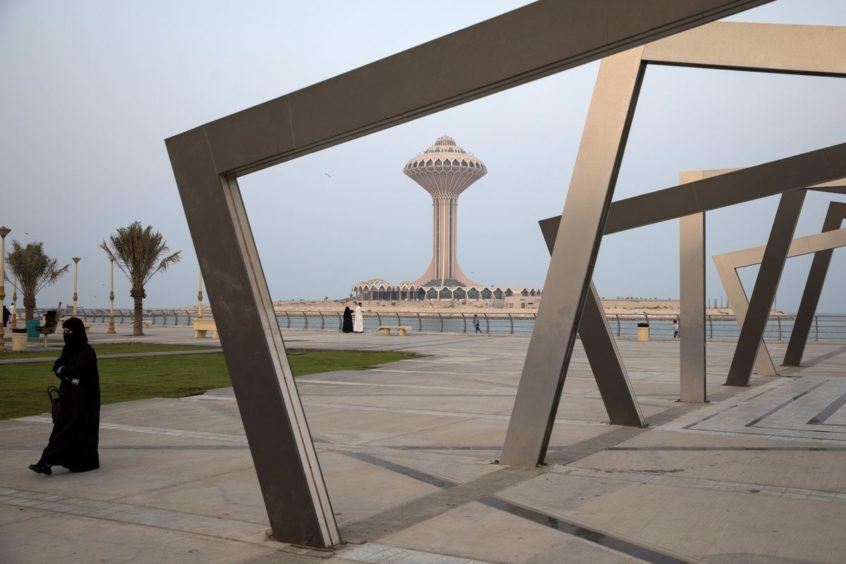
This week could mark the beginning of the end for the biggest equities play in Middle Eastern markets: the upgrade of Saudi Arabia to emerging-markets gauges.
As index compiler MSCI Inc. starts adding Saudi stocks to its EM benchmark with prices of May 28, passive flows are expected to flock to Riyadh. But many active traders are already focusing on expensive valuations, falling earnings estimates and geopolitics.
The main Saudi index is heading for its biggest monthly drop since January 2016, indicating a rally anticipating the event may be losing steam. MSCI moves on to the second stage of the addition in August, while FTSE Russell finishes its own upgrade next year.
Here are some charts that highlight conditions in the $532 billion market:
It’s Expensive
The MSCI upgrade became the most popular theme among money managers tracking Saudi shares, leading to a rally that pumped valuations to the highest in over a decade.
The main gauge in Riyadh climbed 20% since MSCI added the country in 2017 to its watch list for potential inclusion, about two years after the kingdom first allowed foreigners to trade stocks directly. That contrasts with a 2% retreat for the benchmark tracking EM equities in the period as several investors said fundamentals were being ignored.
QuickTake: Why Foreigners Will Buy Saudi Stocks, Like It or Not
Shrinking Prospects
The project to attract foreigners to the stock market is part of a broader plan to diversify the kingdom away from oil. While the Saudi economy has been recovering, companies’ profit growth could stall in the second half and valuations remain “too high,” said Tarek Fadlallah, chief executive officer of the Middle East unit of Nomura Asset Management in Dubai. After the MSCI trade ends, “strategic investors could use the liquidity and higher prices to sell,” he said.
Read more: Saudi Arabia Says Landmark Residency Plan Will Bolster Economy
Buy the Rumor, Sell the Fact?
The Saudi market buzz was preceded by a similar rush of investors prior to MSCI upgrades of neighboring markets United Arab Emirates and Qatar, which slumped after the actual implementation. Earlier this year, Adam Choppin, an investment officer at FIS Group in Philadelphia, described the heavy purchases in Saudi Arabia ahead of its inclusion as based on “naive assumptions” on expected flows, with many investors waiting for “dumb passive money” to arrive and then sell.
Saudi Arabia’s case is different than the neighbors because it will be diluted through several tranches, helping to mitigate a sudden slump, according to Asha Mehta, a senior portfolio manager at Acadian Asset Management LLC in Boston. She noted that the Saudi market is bigger and more liquid, and that it will be hard for active EM trackers to ignore.
Read more from an interview with Mehta.
Additionally, funds tied to the country’s sovereign wealth fund are major stock holders locally, and it is unlikely they will all sell shares at the same time.
Saudi EM Inclusion Begs Question About Elephant in the Room
Bumpy Road Ahead
Investors might find a rough road ahead. Volatility in the index surged this month after attacks on Saudi Arabia’s main oil pipeline and tankers off the cost of the United Arab Emirates. It also jumped after the killing of Saudi columnist Jamal Khashoggi in October and as the kingdom announced an embargo on Qatar almost two years ago.
But, local authorities and the bourse have passed the necessary reforms to guarantee the upgrades, and once the decision is made, compilers don’t tend to be swayed by geopolitical decisions. The stock exchange estimates that foreign ownership could triple by 2022.
Jaap Meijer, the head of research at Arqaam Capital in Dubai, estimates the Saudi market will underperform broader EM after its full inclusion in August because of “elevated valuations,” and said attractive opportunities remain outside the index.